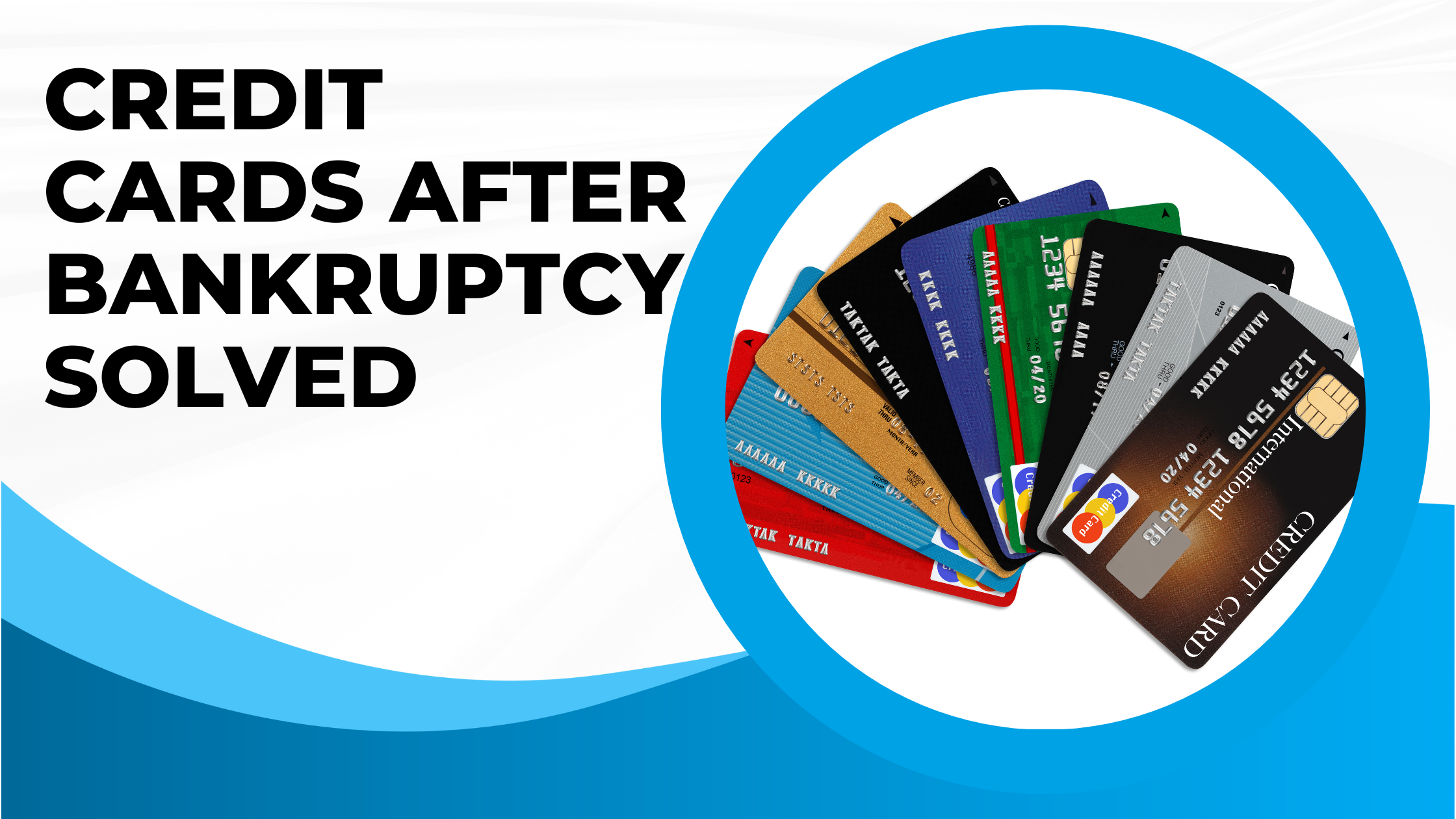There is no doubt that filing for bankruptcy is one of the hardest decisions in life to make. Its impact is massive and usually leaves a negative trail on your credit report. However, it’s still possible to reorganize and rebuild your finances after bankruptcy.
Getting the right credit cards after bankruptcy and having a sound financial plan are ways of getting your credit report improved.
Table of Contents
ToggleBankruptcy and Acquisition of Credit Card
It’s possible to apply for a credit card after bankruptcy. However, the approval process depends on the type of bankruptcy you are filing. There are two types, and they include:
- Chapter 7: when you file for this bankruptcy, understand that the main thing that will get liquidated is all your eligible assets. The cash amount obtained from this will be used to pay back all the creditors. Chapter 7 bankruptcy usually takes four to six months from the initial discharge.
- Chapter 13: this type of bankruptcy is sometimes referred to as the wage earner’s plan. In Chapter 13, none of your assets will get liquidated. However, you will be required to pay all your debts within 3 to 5 years, depending on the court’s approval.
Effects of Bankruptcy on Credit Report
Overall, bankruptcy causes a severe and long-term negative impact on your credit report. These effects typically last for several years. Well, this is because you would have made your creditors incur losses. Generally, it puts you in a tough position, and lenders will not easily offer you loans.
While opening a new credit card account is possible, understand that you will end up paying higher than standard interest rates. By taking advantage of Chapter 13, all your debts will get restructured. This type of bankruptcy will stay on your credit report for around seven years.
However, you must pay them in installments within 3-5 years. With Chapter 7, all debts that you owe will get eliminated. However, the bankruptcy filing record can stay for up to 10 years on your credit report.
Regardless of the type of bankruptcy you file for, your credit points will drop by more than 100 points.
Credit Cards you can qualify for after Bankruptcy
Those applying for credit cards after bankruptcy should consider these two options:
Secured or Partially Secured credit card
A cash deposit usually backs a secured or partially secured credit card. The cardholder normally deposits that cash amount. So, while applying for this credit card, the lender will need you to deposit a certain amount of money into a savings account. Note that the total deposit usually equals the lending limit the lender will allow on your account.
The sum of money requested for deposit acts as security. So, if you default, the lender’s money will still be secure. They will only withdraw money from your deposit account and pay the remaining credit balance.
However, the deposit will still be yours if you finish the payments on time. It’s worth noting that most companies allow people to convert a secured credit card to an unsecured credit card after completing on-time payments. Generally, secured credit cards have lower interest rates than unsecured accounts you are eligible for after bankruptcy.
Unsecured Credit Card
An unsecured credit card is the industry standard. As its name suggests, you don’t need to put a deposit as collateral or security. But if you default, the lender will come after you. Generally, unsecured credit cards have lower interest rates. In addition to that, they usually come with rewards programs.
What you Need to Know When Applying for Credit Cards after Bankruptcy
While it’s good that people apply for credit cards after bankruptcy, there are two major issues they need to know.
High-Interest Rates
Lenders tend to charge high-interest rates in this scenario. You might find that your account has an interest rate of around 20 percent or even higher.
High Fees
To take part in any program, lenders often charge annual fees. Those who provide credit cards after bankruptcy tend to charge even more. If you are applying for a credit card right after bankruptcy, here are some of the fees that you should ask the lender about:
- The set-up fee
- Transaction and administrative fees
- Application fee
Note: sometimes, new account holders are awarded high credit limits. However, the moment their application has been accepted, they are slapped with high charges. Clients should be aware that the high limit can only be useful after the fees are paid. Besides that, you need to pay them quickly because they accrue more interest charges with time.
Why Credit Card Companies Still Offer Lending Services after Bankruptcy
It seems surprising that lending companies would want to offer credit to individuals after bankruptcy. Why would they want to lend money to a person with a risk of a significant loss of cash?
Well, there are several reasons why this typically happens.
- The lender, in this case, usually charges higher interest rates than usual.
- A debtor can’t file for another bankruptcy soon. According to Chapter 7, a person can’t get another discharge within eight years after the previous bankruptcy.
The Best Ways to Rebuild Your Credit Right after Bankruptcy
The main aim of bankruptcy is to get your finances back on track. It’s a new beginning and not just the end. So, how do you rebuild your credit after bankruptcy?
Have a Financial Budget
Your past financial mistakes should be your stepping stone. You don’t want to end up in the same economic woes as in the past. So, create an effective financial plan. If you are unable, you can even seek the services of a credit counselor to help you.
Some of the critical aspects that you need to consider include the following:
- How to manage the cash flow
- Having an effective spending plan
- Avoiding accumulating debt
Learn to live within your financial bracket.
Make sure that you prioritize the essential items first.
It’s also important to have an automatic payment system.
Don’t forget to build solid savings to cater to unexpected needs. If there is any surplus, you can use that for other needs.
Have a Credit Strategy
Having a credit strategy is one of the most important things to do after bankruptcy. Ensure that you check your free annual credit reports. In case you find any errors, go and dispute them as soon as you can. Track your credit score so you can know how your financial activities impact it.
Consider Getting a Secured Credit Card
For starters, you will need to start with a secured credit card. However, you need to analyze what different lenders offer. Don’t be afraid of getting a credit card because of your past mistakes. The best way to repair a bad credit card is by using it.
Look for a lender with the following characteristics:
- Significantly low amount of upfront fee or nothing at all.
- Various pre-qualification checks are in place.
- The lender should be reporting to the three credit bureaus.
Note: make sure that you use the secured credit card in a good way. Pay on time, and within no time, you will be upgraded to the traditional credit card that has low-interest rates. If you decide to switch your account or close it, you will be given your deposit.
How Long Does it Take to Repair Credit After Bankruptcy?
Generally, bankruptcy hurts your credit report. Regardless, it’s possible to rebuild your credit report, even though this will take quite some time. But there is no specific time frame because it all depends on how you handle your finances. You need to exercise patience because this will take quite some time.
Just like the path leading to bankruptcy takes a long time, so is the recovery process. The most important thing to do to reduce the rebuilding time is to create new financial behaviors.
For instance, avoid taking debt if you can. Secondly, make sure that all your bills are paid on time. Don’t forget that having a good budget plan is also essential. Implementing good financial habits will quickly get you on the road to recovery.
The Bottom Line
The period after bankruptcy should be the onset of a new financial journey. You have another chance to make sound financial decisions. While your credit report will get tainted for years, it’s possible to rebuild it. All you need do is be patient. Don’t forget that getting a good credit card and using it responsibly can send you back on the right credit track.

